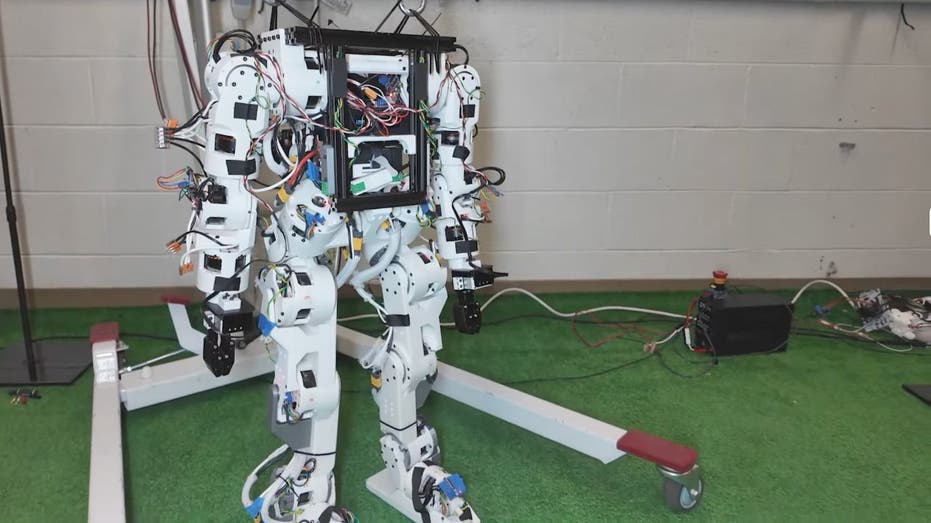📰 China’s first mass-produced flying car debuts

China’s GAC Group has introduced the Govy AirCab, a two-seater flying car aimed at revolutionizing urban travel, showcasing its innovation at the 2025 Hong Kong International Auto and Supply Chain Expo. The Govy AirCab is an electric vertical take-off and landing vehicle (eVTOL) designed for the “low-altitude economy,” including air taxis and short-range personal flights within cities. With a range of about 18.6 miles per charge and priced at approximately $233,000, the Govy AirCab offers premium urban transportation, emphasizing safety and advanced features like 5G connectivity and intelligent driving systems. GAC’s strategic move into short-range air mobility aligns with global trends, positioning the company as a key player in the future of transportation. While the concept of flying cars may have seemed far-fetched in the past, GAC’s commitment to the Govy AirCab signals a significant step towards integrating air travel into daily routines, pending successful technology and regulatory developments.
📰 Berkeley launches a lightweight open-source humanoid robot

The article discusses the challenges of building open-source humanoid robots due to high costs and complex systems. UC Berkeley’s project, the Berkeley Humanoid Light (BHL), aims to address these issues by offering an affordable and accessible robot design. The BHL robot can be built using 3D-printed parts and off-the-shelf components, costing less than $5,000 to construct. It stands 39 inches tall, weighs 35 pounds, and features modular actuators with 3D-printed cycloidal gearboxes for durability. The design allows for gradual assembly and customization, fostering a collaborative community around the project. The BHL project demonstrates that affordable and open-source humanoid robots can make robotics more inclusive and innovative.
📰 Meta AI’s new chatbot raises privacy alarms

Meta’s new AI chatbot has introduced a “Discover” feed that makes user-submitted chats public, including sensitive information like legal troubles and medical conditions. This has raised privacy concerns as names and profile photos are often attached to these public chats. The feature blurs the line between private and public conversations, leading to potential privacy slip-ups. Many users were unaware that their conversations could be made public with just one tap, and the interface lacks clarity on distinguishing between public and private sharing. Privacy experts have criticized Meta for breaching user trust with the Discover tab, which exposes personal conversations without clear consent. It is crucial for users of Meta AI and other chatbots to regularly check their privacy settings, manage their prompt history, and avoid sharing sensitive information to protect their privacy.
📰 SparkKitty mobile malware targets Android and iPhone

A new mobile malware strain called SparkKitty is targeting both Android and iPhone users, scanning private photos to steal sensitive data like cryptocurrency recovery phrases. SparkKitty is an advanced version of SparkCat, using optical character recognition to extract data from images, including crypto seed phrases. The malware uploads images from infected phones indiscriminately, potentially exposing personal and sensitive photos. SparkKitty has been active since at least February 2024, distributed through official and unofficial channels on both Google Play and the Apple App Store. To protect against such threats, users are advised to stick to trusted developers, review app permissions, keep devices updated, and use mobile security software. Google and Apple removed identified apps containing SparkKitty, but questions remain about how it bypassed their app review processes, highlighting the need for improved screening tools as app stores grow in complexity.
📰 Paralyzed man speaks and sings with AI brain-computer interface

A team at the University of California, Davis, has developed a new brain-computer interface (BCI) system to help people who have lost the ability to speak due to conditions like ALS. The system translates brain signals controlling speech muscles into audible speech in real-time, allowing users to communicate naturally through a computer. It uses microelectrode arrays implanted in the brain’s speech-producing area to capture neural activity when the user tries to speak. An AI-powered decoding model then converts these signals into speech, even recreating the user’s own voice and allowing for singing and vocal nuances. The system significantly improves communication, with listeners understanding nearly 60% of synthesized words compared to just 4% without the BCI. While the technology is still in early stages and tested with one participant, it offers hope for restoring essential communication abilities to those living with paralysis.
0개의 댓글